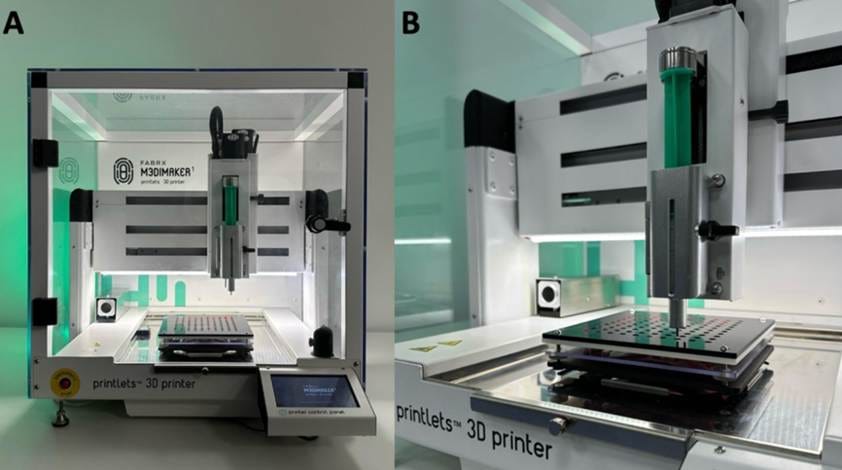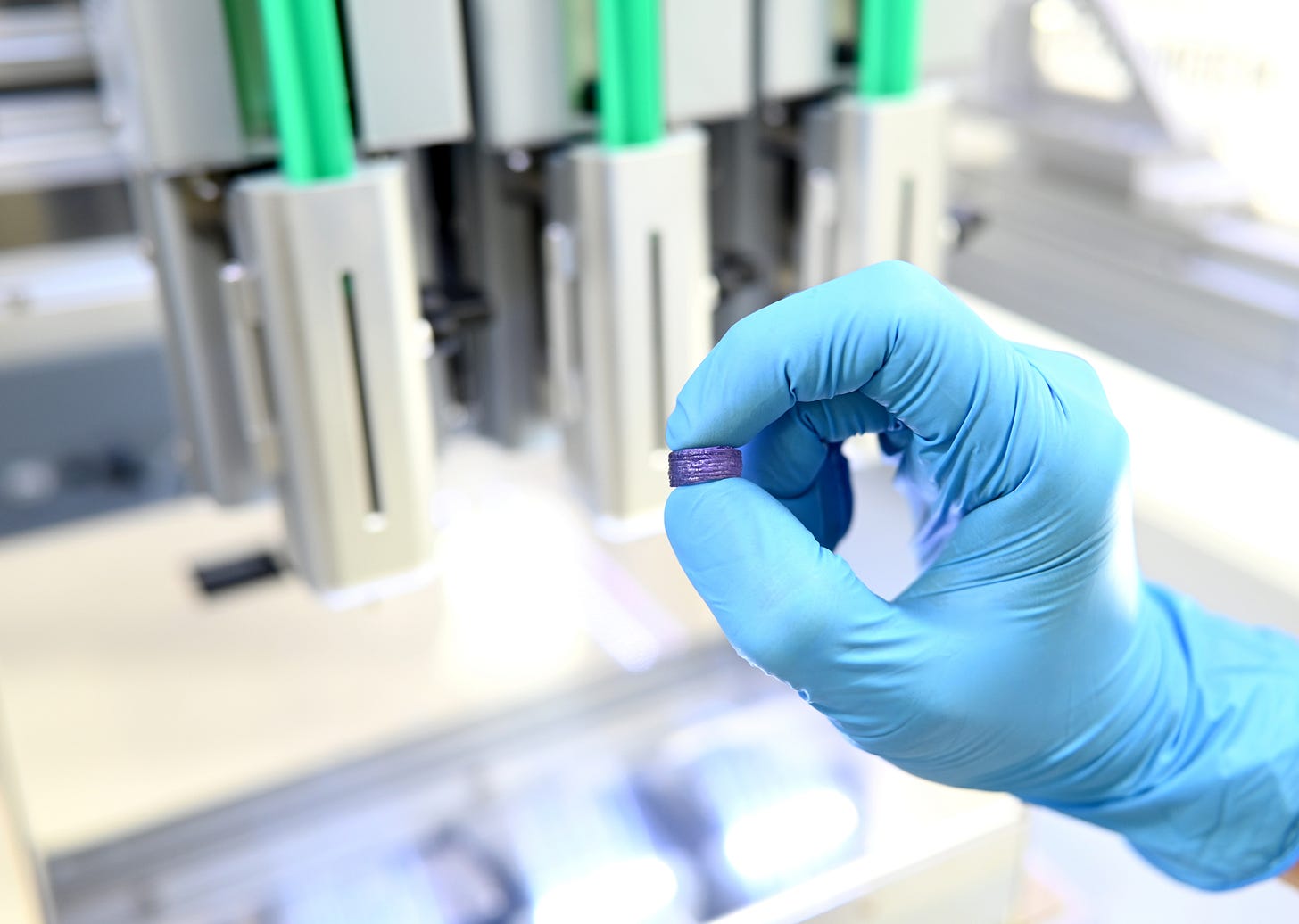⭐17 FABRX: Pharmaceutical 3D Printing
4 min read - Automating the future of personalized medicine💊🖨️
Personalized medicine is gaining momentum; but producing it at scale remains a challenge. FABRX, a UK startup, is automating the process — making custom treatments faster, safer, and ready for the future 🏪🧪
🔍 The Problem
Pharmaceutical manufacturing was designed for mass production — making thousands of identical pills at a time that often fails to address specific patient needs. Children and the elderly, for example, frequently receive suboptimal dosages, leading to side effects or insufficient treatment effects.
For patients on complex regimens, managing multiple pills can be burdensome and prone to adherence issues. While pharmacists can manually compound personalized doses, this traditional method is labor-intensive and error-prone.
In short, today’s pharmaceutical supply chain struggles to deliver truly personalized, on-demand medications at scale.
🔬 The Solution
FABRX enables on-demand, personalized medicine through pharmaceutical 3D printing. Its core product, the M3DIMAKER, is a compact 3D printer sold to hospitals, compounding pharmacies, and research labs. Alongside the hardware, FABRX provides drug-loaded cartridges and software that lets clinicians adjust dosage, shape, release profile, and even flavour.
👩⚕️ Here’s how it works: a pharmacist selects a patient-specific prescription, the printer fabricates the tablet or capsule on-site in minutes — precise, personalized, and ready to dispense.
This B2B model allows FABRX to serve:
🏪 Pharmacies
🏥 Hospitals
🏨 Clinics
🧪 Pharma companies running trials or producing niche formulations
➡️ Offering a faster, safer, and more flexible way to deliver tailored treatments.
FABRX’s M3DIMAKER 1 pharmaceutical 3D printer in action, with an integrated capsule-filling system (A) and a close-up of its precision printhead (B).
📈 Market Potential and Scalability
The global push toward personalized medicine is creating a huge opportunity for pharmaceutical 3D printing.
💡 FABRX is targeting a growing segment. In the U.S. alone, there are roughly 7,500 compounding pharmacies that custom-make medications – a natural initial market for FABRX’s technology.
🏥 The company ’s ability to serve hospitals, clinical trials and pharmacies positions it well to scale across both healthcare and industry settings.
⚡While still early days for this industry, the cost savings, customization potential, and clinical benefits point to a strong growth trajectory.
⏳ FABRX is a pioneer in the field, backed by multiple patents, including innovations in quality control — a key requirement for scaling personalized drug manufacturing safely.
🚀 Stage
🎓 Founded in 2014 as a UCL spinout, the company spent its early years focused on R&D — entirely bootstrapped and supported by non-dilutive public funding.
🖨️ In 2020, they launched the M3DIMAKER, its flagship 3D printer. It has since expanded globally, establishing subsidiaries in Spain and the US to support growing international demand.
👥 Today, FABRX employs 12 people across R&D, product, and commercial teams. Operating without venture capital, the company has surpassed £1M in revenue with strong YoY growth.
🤝 Key collaborators include Gustave Roussy (Europe’s largest cancer research hospital), Pfizer, and other leading institutions.
🚀 Its current go-to-market strategy focuses on hospitals and clinical trials, with plans to expand into pharmacies as adoption grows.
💸 FABRX plans to raise its first external funding round at the end of 2025 to accelerate commercial scale-up and international expansion.
👥 Founder Team
FABRX was founded in 2014 by experts from University College London:
🧭 Dr. Alvaro Goyanes – CEO at FABRX and a pioneer in 3D-printed medicines
🧪 Prof. Abdul Basit – biotech entrepreneur and world leader in drug delivery
🔬 Dr. Bill Lindsay – expert in business development
Together, they’ve published extensively, led clinical trials, and helped shape the emerging field of pharmaceutical 3D printing. Their mission: make personalized, on-demand medicine the new standard in healthcare.







